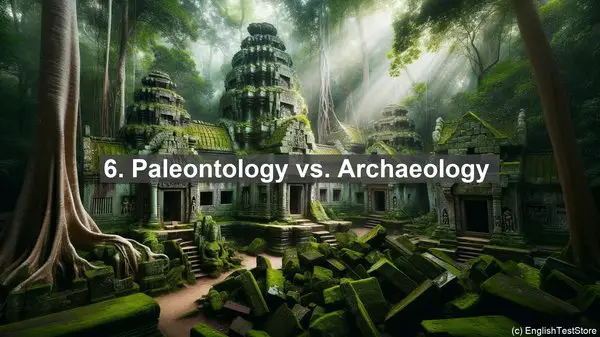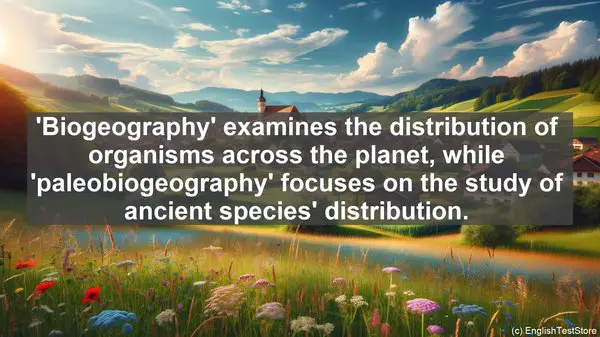Introduction
Welcome to today’s lesson on paleobiology. In this lesson, we’ll be discussing the top 10 commonly confused words in this fascinating field. Let’s dive in!
1. Fossil vs. Fossilization
Often used interchangeably, ‘fossil’ refers to the preserved remains of a once-living organism, while ‘fossilization’ is the process by which organic material is transformed into a fossil over time.

2. Extinct vs. Extirpated
While ‘extinct’ means a species no longer exists anywhere on Earth, ‘extirpated’ refers to a species that is extinct in a particular region but can still be found elsewhere.
3. Evolution vs. Natural Selection
‘Evolution’ encompasses the gradual changes in a species over time, while ‘natural selection’ is the mechanism that drives these changes, favoring traits that increase an organism’s chances of survival and reproduction.
4. Cast vs. Mold
A ‘cast’ is a fossil formed when minerals fill the space left by a decomposed organism, while a ‘mold’ is the impression or hollow left behind by the organism.
5. Taxonomy vs. Phylogeny
‘Taxonomy’ involves the classification and naming of organisms based on their characteristics, while ‘phylogeny’ focuses on the evolutionary relationships between different species.
6. Paleontology vs. Archaeology
‘Paleontology’ is the study of ancient life through fossils, while ‘archaeology’ deals with human history through artifacts and structures.
7. Index Fossil vs. Indicator Species
An ‘index fossil’ is a species that lived in a specific time period and can be used to date rock layers, while an ‘indicator species’ is an organism that provides information about the environmental conditions of an area.

8. Stratigraphy vs. Chronostratigraphy
‘Stratigraphy’ is the study of rock layers and their formation, while ‘chronostratigraphy’ involves the subdivision of geological time based on these layers.
9. Biogeography vs. Paleobiogeography
‘Biogeography’ examines the distribution of organisms across the planet, while ‘paleobiogeography’ focuses on the study of ancient species’ distribution.
10. Taphonomy vs. Diagenesis
‘Taphonomy’ investigates the processes that occur after an organism’s death, including decay and fossilization, while ‘diagenesis’ involves the physical and chemical changes that transform sediment into rock.
